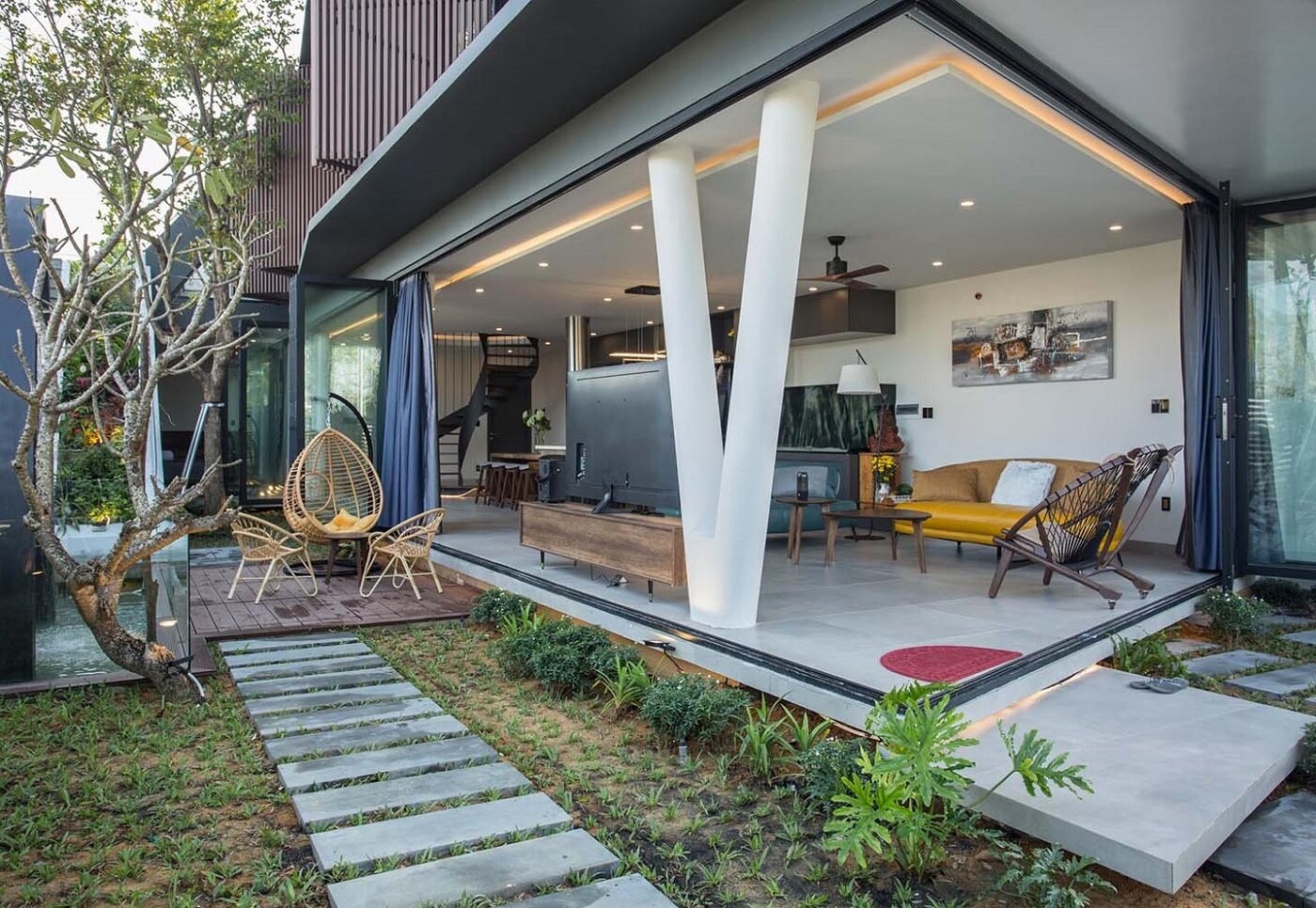#18097. Modern open facade with V-shaped columns and sliding glass panels

The presented image showcases a contemporary minimalist residential facade with an impressive integration of interior and exterior spaces. The architectural composition is built on the contrast of materials — vertical wooden slats on the upper level and large sliding glass panels on the ground floor, creating an effect of transparency and openness.
Particularly noteworthy are the V-shaped white columns that not only perform the structural function of supporting the roof but also become an expressive architectural element that sets the rhythm for the facade. These diagonal supports create dynamism and visual interest, breaking the traditional orthogonal geometry of the building.
The facade solution includes a well-thought-out system of "erasing boundaries" between the house and garden — sliding glass panels allow the living room to be completely opened to the terrace space, creating a unified living environment. A small terrace with wooden decking and stylish wicker furniture serves as a natural transition between architecture and landscape.
Among the techniques that can be used in your own facade design: contrasting materials (wood, glass, concrete), non-standard structural elements as part of the architectural language, the use of large glass surfaces to connect with nature, carefully planned exterior lighting (visible around the ceiling perimeter) and integration of greenery close to the building, which softens the geometric forms of the architecture.